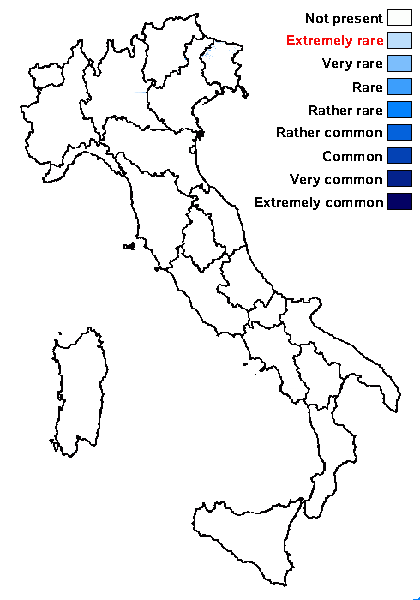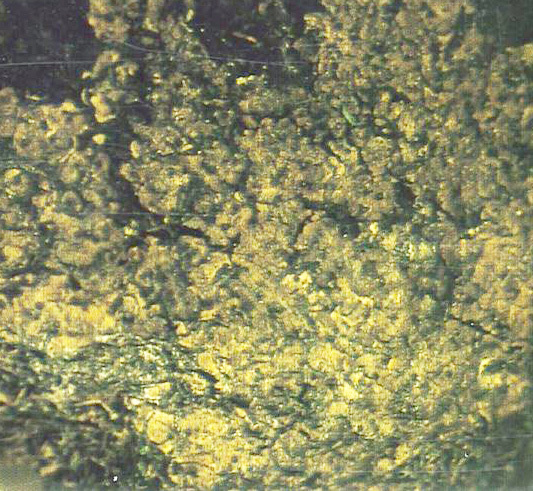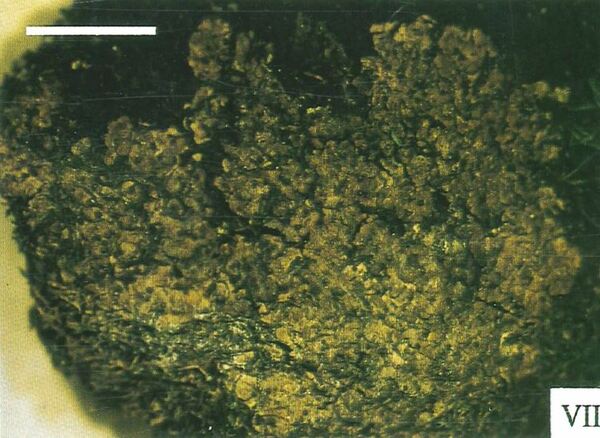Placidiopsis tiroliensis Breuss
Linzer Biol. Beitr., 21: 595, 1989.
Synonyms:
Distribution: N - Frl (Breuss 1996b).
Description: Thallus squamulose, the squamules 0.7-3 mm broad, flattened, smooth, contiguous and densely aggregated, incised; upper surface brownish, epruinose; lower surface dark, attached by a dense mat of 4-5 μm thick, dark rhizohyphae. Upper cortex 10-20 μm thick, pseudoparenchymatous, with a thin to absent epinecral layer; medulla almost completely filled by algae; lower cortex poorly developed, more or less paraplectenchymatous. Perithecia globose, immersed in the squamules, to 0.3 mm across, without involucrellum. Exciple colourless only in very young perithecia, then dark throughout, of tangentially arranged, elongate cells; paraphyses absent, substituted by periphyses; hymenium I+ reddish. Asci 8-spored, clavate, thin-walled, I-, apically slightly thickened, with a small ocular chamber. Ascospores 1-septate, not constricted at septum, hyaline, broadly ellipsoid, thin-walled, 13-17 x 9-11 μm. Photobiont chlorococcoid. Spot tests: cortex and medulla K-, C-, KC-, P-, UV-. Chemistry: without lichen substances. Note: on calciferous, mostly organic soil near and above treeline. The locality cited by Breuss (1996) is in Austria, but very close to the Italian border.
Growth form: Crustose
Substrata: soil, terricolous mosses, and plant debris
Photobiont: green algae other than Trentepohlia
Reproductive strategy: mainly sexual
Commonnes-rarity: (info)
Alpine belt: very rare
Subalpine belt: extremely rare
Oromediterranean belt: absent
Montane belt: absent
Submediterranean belt: absent
Padanian area: absent
Humid submediterranean belt: absent
Humid mediterranean belt: absent
Dry mediterranean belt: absent

Predictive model
Growth form: Crustose
Substrata: soil, terricolous mosses, and plant debris
Photobiont: green algae other than Trentepohlia
Reproductive strategy: mainly sexual
Commonnes-rarity: (info)
Alpine belt: very rare
Subalpine belt: extremely rare
Oromediterranean belt: absent
Montane belt: absent
Submediterranean belt: absent
Padanian area: absent
Humid submediterranean belt: absent
Humid mediterranean belt: absent
Dry mediterranean belt: absent

Predictive model
 Index Fungorum
Index Fungorum
 GBIF
GBIF



